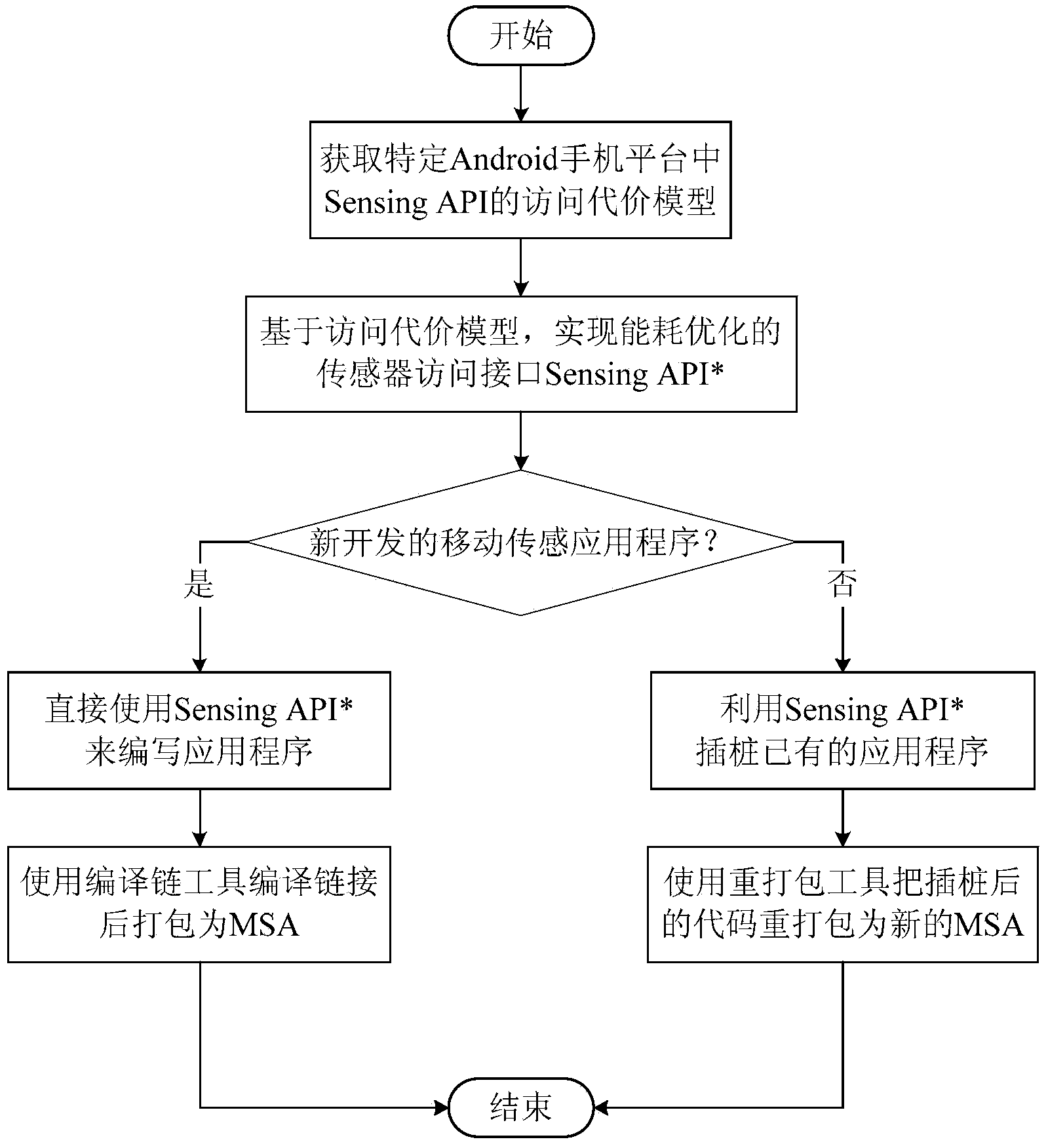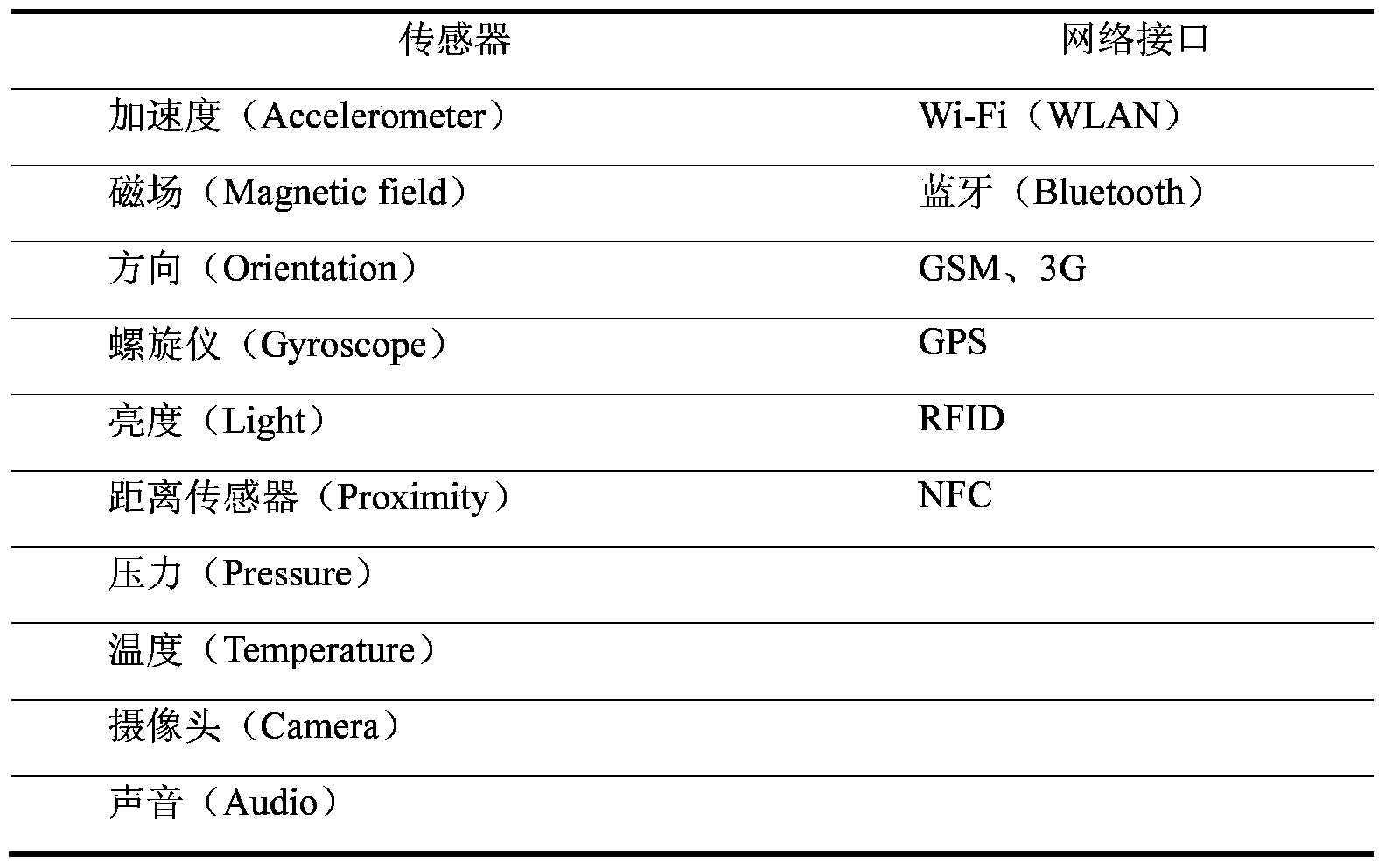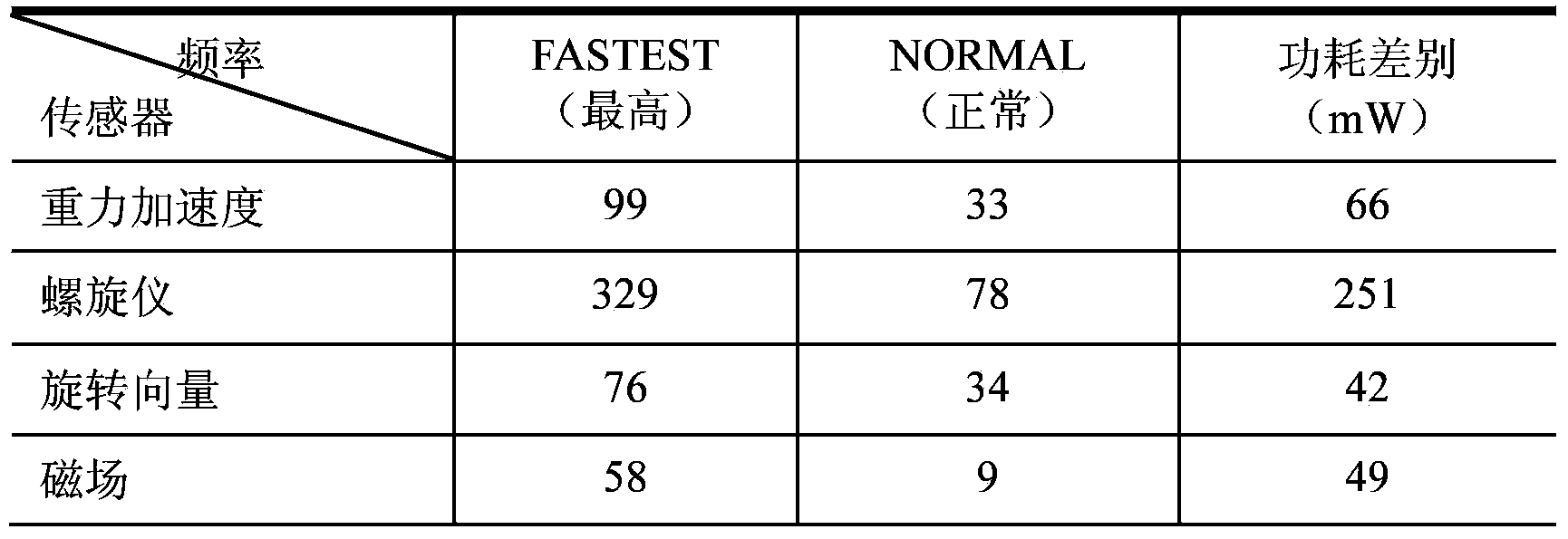Method for optimizing mobile application by utilizing access cost model of API (Application Programming Interface) of Android system
A cost model and mobile application technology, applied in the field of mobile computing, can solve the problems of being difficult to apply to mobile sensing applications and not considering time overhead, etc., to achieve wide applicability and reduce energy consumption
- Summary
- Abstract
- Description
- Claims
- Application Information
AI Technical Summary
Problems solved by technology
Method used
Image
Examples
Embodiment approach
[0035] A. Obtain the access cost model of the Sensing API in a specific Android mobile phone platform. The implementation method is:
[0036] A1. Select the SensingAPI collection on the mobile phone platform (that is, a set of system APIs for collecting sensor data);
[0037] A2. Write a test program for the selected Sensing API set, the test program can periodically and frequently access the specified API, and can measure the time delay of accessing the specified API;
[0038]A3. Run the above test program on the mobile phone platform, record the time delay of accessing each Sensing API by the test program, and use external power consumption measurement tools such as Power Monitor to measure the system power consumption of accessing the specified API in real time;
[0039] A4. Use the delay data and power consumption data obtained in step A3 to obtain the access cost model of the Sensing API on the platform;
[0040] B. Based on the access cost model obtained in step A, writ...
Embodiment 1
[0055] The present invention will be further elaborated below through a specific embodiment.
[0056] The smart phone platform targeted by this embodiment is Google Nexus S, running the Android 2.3.6 operating system. During the measurement of the access cost model, an external Power Monitor meter device is used to monitor the current and power consumption of the mobile phone in real time. During the test, the mobile phone uses an external power supply, the voltage is constant at 3.7V, the screen remains always on and the brightness remains unchanged, no other applications are running at the same time when testing a certain sensor, and no other sensors are turned on at the same time.
[0057] The acquisition of sensing information on the Android platform is mainly achieved by querying the output values and related states of various built-in sensors and network interfaces. The main built-in sensors and some network interfaces in the Android platform are listed below.
[005...
PUM
 Login to View More
Login to View More Abstract
Description
Claims
Application Information
 Login to View More
Login to View More - R&D
- Intellectual Property
- Life Sciences
- Materials
- Tech Scout
- Unparalleled Data Quality
- Higher Quality Content
- 60% Fewer Hallucinations
Browse by: Latest US Patents, China's latest patents, Technical Efficacy Thesaurus, Application Domain, Technology Topic, Popular Technical Reports.
© 2025 PatSnap. All rights reserved.Legal|Privacy policy|Modern Slavery Act Transparency Statement|Sitemap|About US| Contact US: help@patsnap.com



